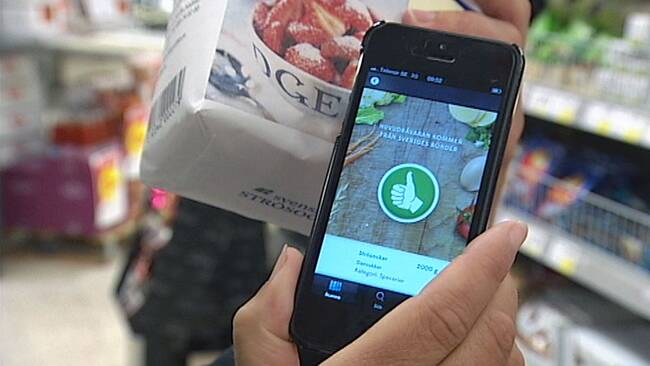- If we are not always deceived, the customer asks Siv Tansbo, who we meet in a grocery store in Falun.
She, like many others, thinks it is important to know where the food comes from and to be able to see it on the packaging.
The scam that she is referring to is the strawberry bluff where Leif Svensson in Nittsjö in Dalarna revealed that ICA's frozen berries were grown in Morocco and could potentially carry hepatitis A infection. However, the packaging was marked with Belgium. Completely legal. Frozen berries and a variety of other goods need only be labeled with packaging country.
Buying locally
- I think it is important where the food comes from, says another customer, Ingalill Johannesen. I try to buy local, Swedish or sometime Danish.
- You should not be able to rely on the marking, she wonders.
No, it's not always possible. At best, you can read the fine print and arrive at the country of origin or you can call the customer contact and hope that they know which country the product really comes from.
LRF responds
- I wasn't really surprised at all when I heard about the strawberry bluff, says Nina Nurmesniemi at LRF Dalarna / Gävleborg.
- As soon as I see the label "Made in", "Packaged in" or "Produced in" I pull my ears and wonder if the country of origin is really what is on the packaging.
App to help
LRF is one of the organizations that fight for origin labeling on the food in the stores. Today, there are many exceptions and confusing illustrations on the packaging. Since a few months ago, the organization has an app that will help consumers to find out for themselves whether the product contains Swedish raw materials or not.
By downloading the app, anyone can scan the food barcode and then get a thumbs up for Swedish raw materials or the thumbs down for the products that don't have it.
Perceived as Swedish
Nina Nurmesniemi shows a classic example of frozen meat. On the packaging stands Fjällskav and a big picture shows a clean in what looks like a Lapland landscape. The product is guaranteed to be Swedish.
-But when I check with the scanner I get my thumbs down, the raw materials do not come from Sweden, says Nina.
She points out that the packaging is still a little better than many others, as you can see that the meat comes from deer in New Zealand.
Thumbs down
But the products that obviously play on Swedishness, but which do not contain Swedish raw materials, are many. We test for a short time Småland jam, Frödinge cheesecake, black pudding and Åseda cheese - None of the products get the thumbs up from the app.
- If we want consumers to be able to make conscious choices then it must be the origin of the products, that is A and O. Then people have to choose what they want, but in order to be able to choose at all, it must be origin, says Nina Nurmesniemi.
New EU rules
In December next year, new EU rules for food packaging will begin to apply. Among other things, the purpose is that it will be more difficult to mislead consumers with symbols and text on packaging.
When it comes to frozen berries as in the strawberry case, there are currently no new rules, just a report on how important it is for consumers to get more information about the origin. There is resistance to origin markings from many directions.
- The producers who do not have Swedish raw materials, or may not even know where the raw materials come from, do not want to have a mandatory labeling, notes Nina Nurmesniemi.

